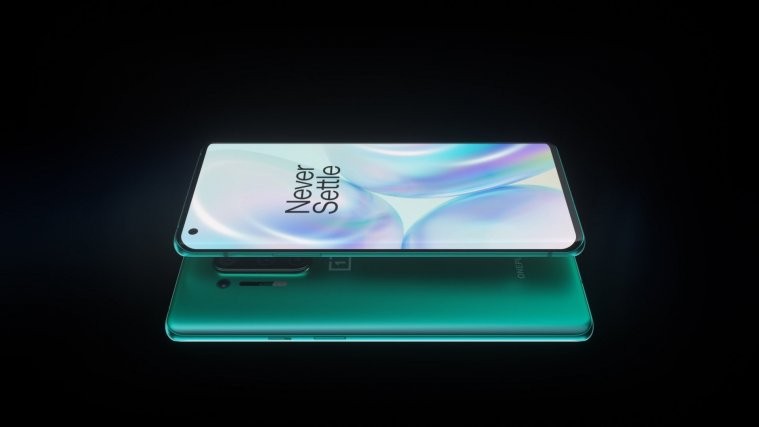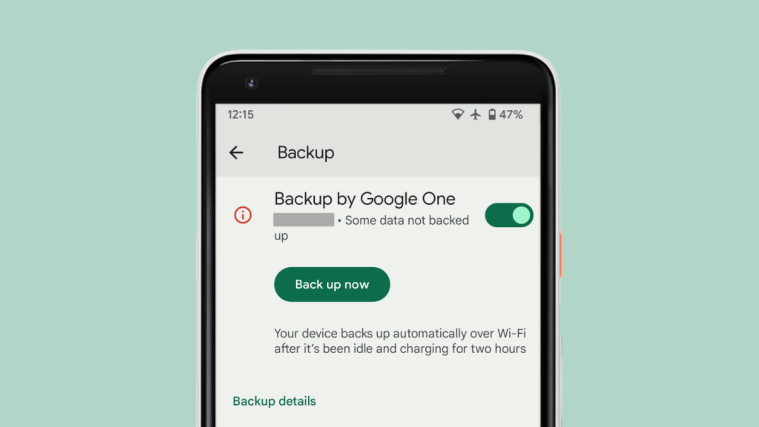Fusing affordability with top-notch performance, Chinese smartphone manufacturer, OnePlus, has made quite a name for itself over the last few years. It delivers world-class customer support, rarely misses to roll out updates on time, and, most importantly, always strives to achieve the improbable.
So, whenever a OnePlus launch party comes around, enthusiasts across the world keep their eyes peeled, hoping to see something spectacular. This year, due to the COVID-19 pandemic, OnePlus was forced to conduct its launch event in an empty auditorium.
Fortunately, thanks to technological efficiency, users across the globe were able to attend the “party” through live stream, saw the unveiling of OnePlus’ latest offering. Hence, despite the subdued launch, OnePlus managed to gain enough traction for its latest flagships: 5G-enabled OnePlus 8 and OnePlus 8 Pro.
In this piece, we’ll take a brief look at the latest devices from OnePlus’ coveted factory, and tell you whether they are as good as advertised.
What do you get with OnePlus 8 for how much?
OnePlus has bumped up the price quite significantly this year, but that’s not necessarily surprising considering the performance you get, at least on paper. The OnePlus 8 starts at $699 and goes all the way up to $799. As you might have guessed already, the price difference is primarily due to onboard storage and RAM.
The more premium choice gives you 12GB of RAM and 256GB of storage while the base variant comes with 8GB and 128GB options. Verizon and T-Mobile, too, are bringing the OnePlus 8 to the United States. However, it is only the former that’d support the blistering millimeter-wave 5G.
Please note that if you wish to experience OnePlus 8 on Verizon’s super-fast network, you would have to shell out $799 for the 8GB/128GB variant.
With the confusing pricing option out of the way, let’s take a look at what you get under the hood. Powered by Snapdragon 965, OnePlus 8 should annihilate pretty much anything that you throw its way. It also has a beautiful 6.55-inch, 1080p, 90Hz display, and a beefy 4300 mAh battery, guaranteeing seamless viewing. Finally, you get three rear cameras — 48MP primary, 16MP telephoto, and 2MP macro — and a 16MP front shooter.
Not that shabby for a sub-$700 device, we believe.
What do you get with OnePlus 8 Pro and for how much?
Now that we’re done with OnePlus 8, let’s take a look at its bigger, beefier, and more expensive sibling: the 8 Pro.
The OnePlus 8 Pro starts at $899 — $200 more than the OnePlus 8 — and goes up to $999. The cheaper 8 Pro gets you 8GB of RAM with 128GB of onboard storage, while the top-end variant sports 12GB of RAM and 256GB internal memory.
As the moniker suggests, the Pro variant is bound to have some improvements over the regular OnePlus 8. And we are pleased to inform that these changes are quite significant.
First off, the 8 Pro comes with a bigger 6.78-inch, 1440P screen with a refresh rate of 120hz — delivering a richer viewing experience than the OnePlus 8. The rear camera setup on the OnePlus 8 Pro gets an additional 8MP telephoto lens, bringing optical zoom into the mix. And finally, the battery, too, gets a generous 210 mAh upgrade, bringing the unit up to 4510 mAh.
OnePlus 8 or OnePlus 8 Pro — Which one to get?
Before we pit the newly-released devices against some of the leaders of the segment, we must talk about how the two fare against one another.
Ranging between $699 and $999, it’s fair to say that neither of the devices is cheap. OnePlus has clearly tweaked its famous ‘Flagship Killing’ persona to become one of the juggernauts in the business. However, if you can look beyond the dramatic change of stance, you get to pick between two very capable devices.
If you want to save a couple of hundred dollars and want a super-smooth device that also promotes one-handed functionality, OnePlus 8 should be the obvious choice. Again, if you have money to spend and want the best possible screen, an additional telephoto lens, and Warp Wireless charging, the 8 Pro should fit the bill perfectly.
Performance-wise, both OnePlus 8 devices should leave you satisfied, as both are powered by the latest Snapdragon 865 processor and 8/12GB of RAM. So, ultimately, it boils down to your priorities; features you’re looking for in your new flagship.
Should you consider OnePlus 7T?
In late 2019, OnePlus released the OnePlus 7T and 7T Pro, boasting improvements over the previously-launched 7 and 7 Pro. Now, with the launch of yet another new lineup, comparisons are bound to arise.
Thanks to the introduction of 8 and 8 Pro, OnePlus is selling the OnePlus 7T at a reduced price of $499. At that price — $200 less than the OnePlus 8 — you get the same display unit and tri-camera setup with a telephoto lens. You miss out on 5G, a slightly bigger battery, and the latest Snapdragon 865 processor, but if you’re only concerned with real-world performance, you’re unlikely to notice much difference between the 865 and 7T’s 855+.
So, unless you’re desperate to have the latest Snapdragon chipset, a hole punch display, a bigger battery, or 5G, there’s no need to shell out $200 for the latest OnePlus 8.
As already mentioned, OnePlus also launched the 7T Pro last year. Sadly, that device isn’t officially available in the United States.
Should you upgrade from 7/7T?
Having gone through the spec sheet, we can clearly establish that the OnePlus 8 flagships are fantastic devices. However, when pitted against their predecessors, they have a hard time settings themselves apart.
OnePlus launched the OnePlus 7 and 7 Pro last year. The bigger and arguably better, 7 Pro, landed in the USA as a T-Mobile exclusive, sporting a $669 price tag — a good $30 less than this year’s regular OnePlus 8. At that price, it offered a 1440P, 6.67-inch display with a respectable refresh rate of 90hz; Snapdragon 855 chipset, a robust triple-camera setup, and the best of all: a motorized pop-up selfie camera, which made the screen notch-free.
OnePlus 7T, on the other hand, improved on all aspects of the 7-series duo but introduced a teardrop notch — a step in the wrong direction after 7 Pro’s motorized pop-up camera.
OnePlus 8 and 8 Pro have traded the teardrop notch in favor of a hole-punch display. Thanks to Samsung, the idea didn’t come off as a shock, but it’s still not as immersive as the 7 Pro’s flawless screen.
Practically, there’s no reason why a OnePlus 7 Pro/7T user would feel the need to upgrade just yet. The battery, of course, is an aspect you could consider, but the difference isn’t decisive enough.
We believe 5G is going to be the only legitimate difference maker here, as none of its predecessors possessed the ability to work on the latest network band. So, unless you’re determined to have the best possible chipset or 5G, we’d recommend to wait for a bit and see what OnePlus comes up with later in 2020.
What about other flagships?
Unless you’re married to the idea of buying a OnePlus flagship, you’d be wise to look for alternatives. Here, we give you the two best options you could consider.
Samsung Galaxy S20
Naturally, when you’re thinking flagships, you can’t discount the leading smartphone manufacturer in the world: Samsung. The South Korean OEM has already launched its S-series flagship for 2020 — Galaxy S20 — and all three have been received with great aplomb.
The trio of S20 devices — S20, S20+, and S20 Ultra — has 5G, which neutralizes OnePlus’ biggest advantage. Even the base S20 has a 1440P display with a refresh rate of 120hz — which blows the regular OnePlus 8 out of the water. The camera unit on the S20 and S20+ have also been heavily lauded, with many claiming that they’re the best units on any Samsung flagship, to date. Additionally, if you want mindboggling optical Zoom, there’s always the S20 Ultra to go for.
Pixel 4 XL
Thanks to a bunch of leaks and a rather steep price tag, the Pixel 4 duo failed to garner the fanfare they anticipated. Sure, they had almost all the bells and whistles you would want in a flagship, but Google’s asking price was still too high for most users.
A few months have flown by, and Google has started to offer lucrative discounts to get its 4-series devices off the shelves. After the latest price cuts, you could get a Pixel 4 XL for $600 — a steep $300 cut from its original asking price. The regular Pixel 4, too, has seen a nosedive, but its poor battery life has kept it off our list.
The Pixel 4 XL, of course, comes with Google’s unmatched software wizardry, which would allow you to experience Android 11 and 12 ahead of anyone else. The camera might only be a dual sensor, but it shoots better than any other cell phone on the market — especially in poor lighting conditions. Google’s “revolutionary” Soli Radar might not be lucrative to all, but it’s not as bad as you might think. Gestures have improved quite over the software updates, and Google promises to work on them for the foreseeable future. The thick bezels could be a turn off to some and there’s no 5G support to boot. But, despite the shortcomings, we feel the overall package is a lot more compelling than the regular OnePlus 8.
What does the future hold?
Having already discussed the OnePlus 8 duo and their competitors, we shift our attention to upcoming flagships, which may or may not make the game more complicated for the Chinese smartphone manufacturer.
As we all know, OnePlus likes to release two new smartphone lineups each year, with the latter always carrying a considerable spec bump. Last year, we saw the 7T pair dampen the charm of the 7 and 7 Pro. This year, the upcoming 8T duo — still under speculation — is likely to do the same.
Later this year, Samsung is set to launch the Galaxy Note 20. We don’t have much info at hand, of course, but it will certainly be an upgrade over the Galaxy S20. Google, too, will release the Pixel 4a and 5, respectively. While the former won’t be in the same performance bracket as the OnePlus 8 duo, the latter is expected to give them a run for their money.
Final words
The OnePlus 8 series has firmly established the Chinese OEM as one of the big players in the industry. And that’s not necessarily a good thing. Sure, we’ll continue to get brilliant devices from the Chinese powerhouse, but that “flagship killing” philosophy will be sorely missed.
With the 8 and 8 Plus, OnePlus has attempted to take on the new world, blessing the devices with the revolutionary 5G technology. And while we can’t help but admire the firm’s brave attempt, we must also point out how unnecessary it feels. We are still at least a couple of years away from unlocking the full potential of 5G, and that is something manufacturers must keep in mind before making all their flagships 5G capable. Especially when it bumps up the price out of our reach.
At the end of the day, people, who are looking for a powerful 5G flagship and love the flavor of OnePlus, can happily pick the OnePlus 8 Pro. Followers of OnePlus’ original motto, however, would probably benefit from waiting or picking a different smartphone.










I have bought the oneplus8 pro and I am very satisfied with it. for me it wasn’t primarily about the brand, but it was also about not having any bloatware and other needless software. the pixel was a contender for me before I really spend any time on it at all. after which I disregarded it for poor performance. A shame, if google really put some time into it it could be a phenomenal phone.